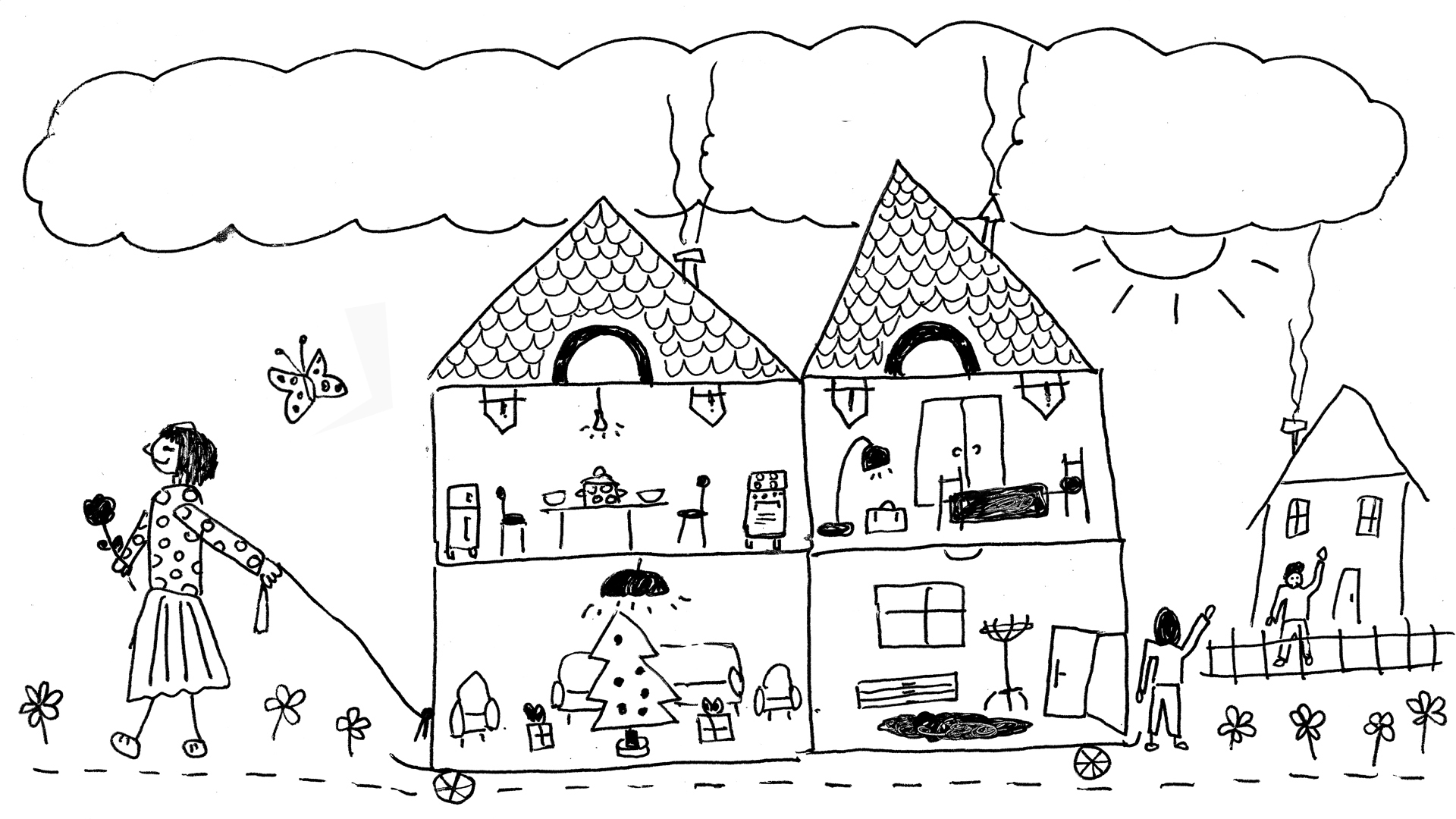What makes a house a home? Memory and belonging in Moj Dom

Moving into an empty house can evoke a profound sense of uncertainty. For many, especially those who have experienced significant life changes, this feeling can be overwhelming. A house can feel like an unfamiliar space, a reflection of past trauma, or even a symbol of hope for a fresh start. This is particularly true for people who have lived through war, where an empty home can represent a time frozen in history, awaiting a new chapter.
For some, leaving the scars of war behind is essential in making their new house feel like home, while for others, the sense of belonging comes from how well they have adapted to their new environment and how they process the loss of their former home.
These experiences are deeply personal, yet also shaped by generations, politics, culture, and society. Thirty years after the wars that led to the breakup of Yugoslavia, the Moj Dom Project has opened up spaces for connection and reflection. Through conversations, interviews, public events, and more, we have gathered a collection of stories and reflections into an online publication. This publication showcases personal narratives from individuals living in Austria, Croatia, Germany, Italy, and Slovenia, offering valuable insights into their experiences of displacement, loss, and rebuilding.
The central thread that connects these diverse stories is memory—how memories shape our understanding of the present and help us navigate the complexities of our lives today. Through these shared memories, Moj Dom encourages a deeper understanding of personal and collective identity.
Creating a home through memory: the role of objects and stories
We can think of Moj Dom as a metaphorical home—one that fosters connection and brings together the power of storytelling. In this metaphor, the objects within the home serve as quiet storytellers. Without words, they hold the weight of past experiences, keeping memories alive. If Moj Dom were a living room, the objects around it would invite conversations and exchanges of stories. Neighbors could gather in the courtyard to share their experiences, while essential decisions for the future could take place in the kitchen. Meanwhile, the most intimate memories might be tucked away in a small suitcase, resting in a bedroom.
While many of the texts in this collection begin with painful memories of war, loss, and displacement, they also provide opportunities to explore the personal and political importance of those experiences. Nostalgia, often a feeling of longing for the past, can sometimes act as a barrier to progress. However, it can also be a driving force for positive change, much like the profound shifts that occurred after the dissolution of socialist Yugoslavia.
The power of storytelling: listening and sharing for healing
One of the most significant aspects of these narratives is the ability to share one’s story. This ability doesn’t solely depend on the storyteller, but also on the listener’s capacity to appreciate the value of those memories. As the texts evolve, particularly towards the end, they reflect the importance of creating spaces where people can speak, listen, and connect with others who have experienced similar hardships. This process of storytelling and listening is crucial for healing and building a sense of shared understanding.
30 years after the Yugoslav wars
Reflecting thirty years after the events of the 1990s, Moj Dom highlights the importance of time, place, and memory in shaping the present. Even for those who did not experience the wars firsthand, the stories from Moj Dom remain relevant. This project not only preserves historical memory but also creates spaces for empathy, solidarity, and care, fostering growth and mutual understanding.
While the legacy of the Yugoslav wars may not have a clear resolution, the process of healing and reconciliation is ongoing. It is not only a political issue but a deeply human one. Understanding this ongoing process and promoting more compassionate models of solidarity and welcome are essential for driving meaningful change. This is true not only within the region of the former Yugoslavia but also on a global scale, where the lessons learned from these stories can help create a more inclusive, caring world for all.
Table of content
- Towards a new sense of home, by Giulia Loda and Lorenzo Scalchi
- How an NGO changed Split, by Petar Bagarić
- Working with refugees in the Nineties, by Petar Bagarić
- Ontology of post-Yugoslavianism in recent debates, by Lana Zdravković
- Suitcase carriers, by Giulia Loda and Lorenzo Scalchi
- Collection days as practice to explore the community memories, by Laboratorio Lapsus
- Home is where I am my true self, by Anja Gvozdanović and Emina Bužinkić
- Home is the present when you don’t have to fear for the past, by Heike Karge
- How to write an educational resource, by Laboratorio Lapsus
- Interview with Damir Avdić, by Zala Dobovšek
- The Resilience of History, by Blaž Kavšek and Gregor Moder

Moj Dom is a project funded by the European Union. Views and opinions expressed are however those of the authors only and do not necessarily reflect those of the European Union or CERV. Neither the European Union nor the granting authority can be held responsible for them.
Illustration ☉☉ Ivana Ognjanovac for Moj Dom


